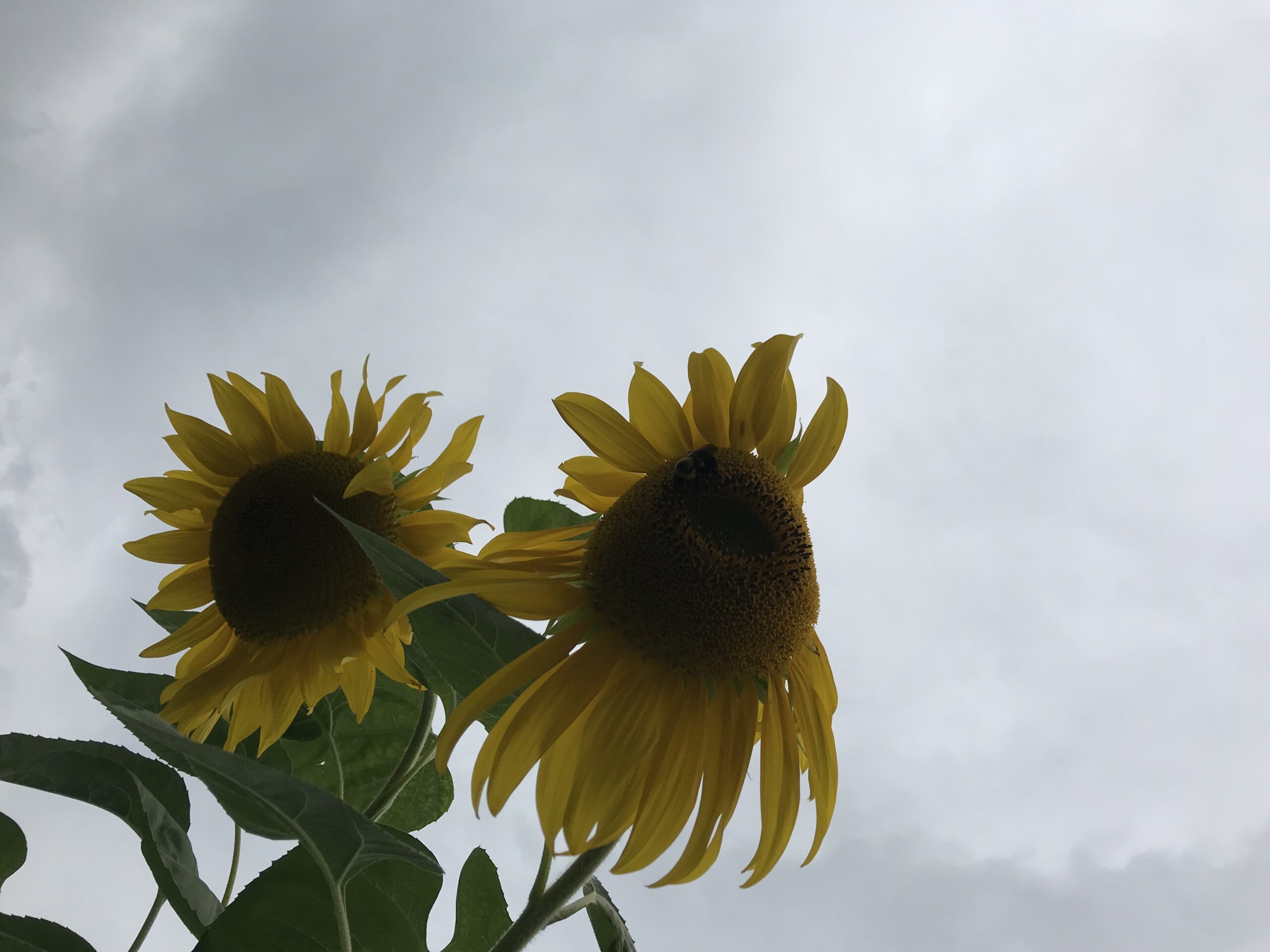Native to the Americas, joyful sunflowers are an easy-to-grow garden favorite. Cultivated since ancient times, most of the 70-ish sunflower species are annuals. Not all sunflower varieties display the traditional petal-rimmed disk-shaped flowers usually associated with the sunflower name. They are not even all tall. But most species do develop traditional 9- to 16-foot-tall stalks topped by large, yellow, seed-laden flowers.
Heliotropic sunflowers follow the sun, facing east at sunrise and tracking the sun as it moves across the sky. The seeds of the sunflower are valued for their high oil content and can be roasted and consumed once the growing season is over. Or leave the finished sunflower heads on the stalk and watch the critters come in for a snack (birds and squirrels are big sunflower seed fans).
As the name would imply, sunflowers grow best in full sun. They aren’t too picky when it comes to soil; just make sure to avoid any areas that stay constantly damp as sunflowers don’t love wet roots. While sunflowers are non-toxic to pets and people, the shells of sunflower seeds do emit toxins as they break down that can kill grass. Keep this in mind when selecting a planting location.
It’s easy to grow sunflowers by planting seeds directly in the ground. It’s so easy to grow sunflowers from seeds, in fact, that many gardeners will find the shoots of self-planted sunflowers growing in the same location year after year. Some people even find them springing up unbidden underneath bird feeders.
Plant sunflowers two weeks before the last expected frost (they can handle a little chill). Dig a shallow trench around 2 inches deep and place seeds 6 inches apart. Space rows around 30 inches apart. Cover seeds loosely with dirt and keep watered until sprout appear, seven to 10 days after planting. Stagger planting time to enjoy a longer blooming, planting a new row of seeds every couple of weeks. Sunflowers usually mature in 80 to 120 days depending on the variety.
To harvest seeds, keep a lookout for signs of maturity. Large heads of seed-heavy flowers will nod downward, and petals will begin to dry and fall off. Once seeds have ripened, cut the stalk about a foot below the head. Harvest on a dry day to minimize the risk of mold.
Hang the flower heads to cure in a warm, dry place (think garage, shed, basement, or pantry), making sure that the area is protected from rodents and bugs. Allow to cure for several weeks until thoroughly dried out. Lay out newspaper or similar, and use your hands to rub seeds from the heads of flowers. Properly matured and dried seeds should come out with little resistance. Allow seeds to dry several more days, then roast or store raw in airtight glass jars.
